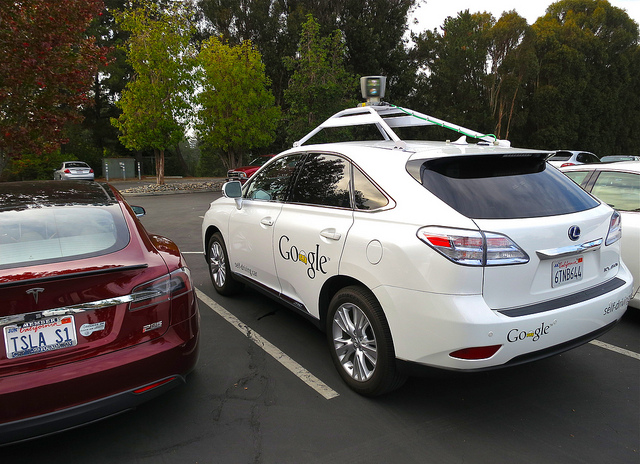Obviously safety is the number one issue with autonomous cars. However, how exactly are manufacturing testing these features and ensuring the safety of the driver? Manufacturers need to use scenarios at exhaustively test each safety feature. And in the end, manufacturers use scenarios that mock the real world. After testing braking, radar sensing, speed, lane changing and etc. autonomous driving cars are tested on the real public roads. As mentioned in the previous blog, only California, Nevada, Arizona and Michigan has legalized autonomous cars on public roads. For instance, Google is has already registered it’s first autonomous car user to Mr. Steve Mahan in San Jose, California.
Steve is blind, which means that this new technology greatly increases Steve’s range of mobility and makes distant transportation possible for him. Already, the car is able to cruise into drive throughs, check and safely proceed through stop signs, and make perfect radius turns around bends. In addition to all this testing, sources say that in 20 years, nearly half of all vehicles will be autonomous. Also, if autonomous cars prove to be effective, in 20 years, we may see different laws and the construction of new lanes specifically for autonomous vehicles. Once again, this is under the assumption that autonomous cars are safe and effective. ( No way any of this would happen if autonomous cars turned evil and began crashing into things. Come on, I know that is a real fear in some of you) For instance, Mercedes-Benz has a title and method to proving that their autonomous vehicle will be safe.
Mercedes-Benz is one such car manufacturer that focuses on the safety of their customers and passengers. One technology Mercedes-Benz has developed is the PRE-SAFE preparation system. This technology consists of many sensors around the car that is constantly analyzing the conditions surrounding the car. If it determines that an imminent accident is to happen, it can tighten seatbelts, adjust headrests, and even roll up windows to help minimize the incoming impact. This is an example of a more fundamental safety technology.
Mercedes has built on top of PRE-SAFE for more particular safety solutions. The car’s sensors are also used to determine if the car is approaching the traffic at a dangerous speed. If it determines that collision is imminent, it will automatically activate the car’s brakes up to 40% and audibly alert the driver. If the driver does not respond, the car can fully activate the brakes to lessen the impact of the collision. In an earlier blog post, we mentioned driver fatigue and how it is a problem for drivers on long trips. Mercedes has developed a safety technology called Active Lane Keeping Assist. This technology uses a camera to watch the lines that mark lanes on the road. If the car starts to steer out of its lane, the steering wheel will vibrate to alert the driver. If needed, it can also apply the brakes of either wheel to keep the car in lane. An accompanying feature is the Active Blind Spot Assist. Cameras are watching your blind spot for the driver so when he tries to signals to switch lanes with a car in his blind spot, the car will audibly and visually alert the driver. Finally, Mercedes-Benz is doing their best and putting their top engineers on the project to ensuring that autonomous vehicles are safe and prove to society that autonomous cars are in fact the next big thing on the road.
